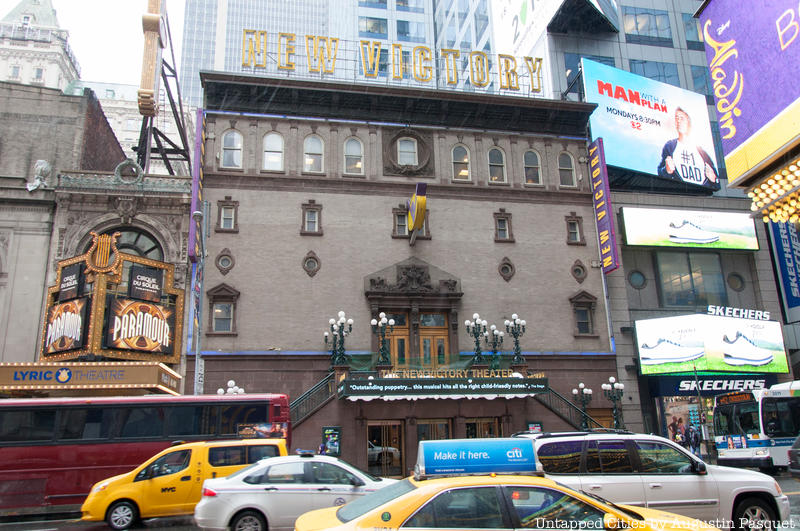20. New Victory Theater

In 1900, the grandfather of famous lyricist Oscar Hammerstein built the New Victory Theater as the Theatre Republic. The architecture features a Venetian style facade with a grand staircase in the front. On the roof of the theater was the Paradise Roof Gardens where a miniature Dutch village was created for theater goers to enjoy, complete with cows, ducks, chickens, and even a milkmaid to give children fresh milk. In 1902, David Belasco took over the theater and renamed it after himself, only to change it back in 1910 to the Republic Theatre when he took control of the other Belasco Theatre. Under Belasco, the theater underwent some major technological changes so that more elaborate shows could be performed. With an orchestra pit, a modern stage, and new lighting system, the venue was able to attract some great talent. In 1923, Abie’s Irish Rose was performed, giving Belasco a hit and Broadway its third-longest-running play in history at 2,327 performances.
From the 1930s to 1942, the New Victory was turned into Broadway’s first burlesque club and renamed Minsky’s Republic. Minsky redid much of the architecture and added many features which would remove some of the original Venetian style. When Mayor LaGuardia banned burlesque in 1942, the Minsky became a movie theater. The eruption of World War II ushered in a period of patriotism, renaming the Minsky Republic to the New Victory. The theater suffered much like many Broadway theater, and in 1972, it became the block’s only XXX-rated movie theater. The City and State of New York breathed new life into the theater (and many others) by establishing the New 42nd Street, a nonprofit to revamp many of the theaters put into disrepair. The New Victory opened on December 11, 1995 New York’s only full-time performing arts center for kids and families. The theater will not be considered for landmark status.





